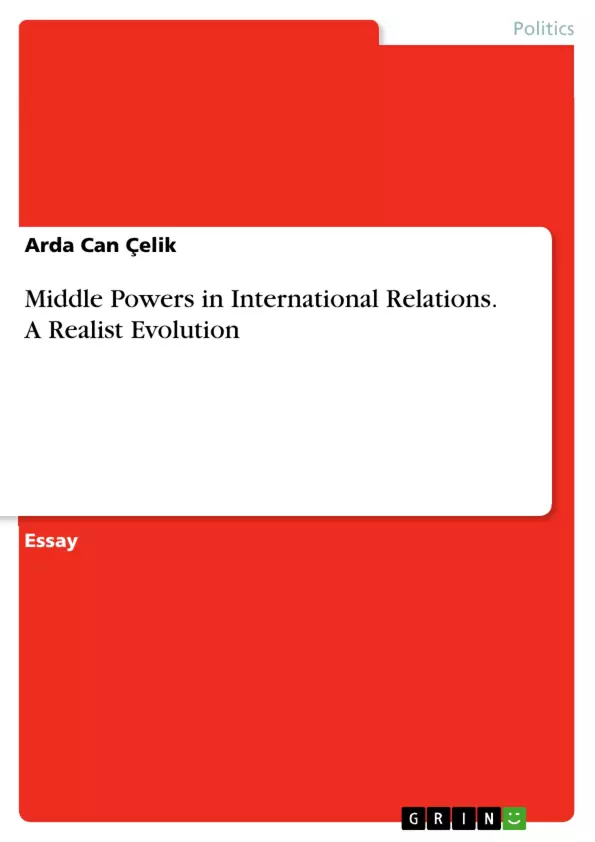This essay examines the categorical structure of middle powers through the lens of realism. It highlights the problem of measuring size of power and suggests realist solutions. The essay also notes the inner upheavals of realism, particularly the regulatory requirements without which medium forces cannot operate. The debate takes an evolutionary path. Therefore, it sometimes follows a narrative approach. It emphasizes the mile stones of Westphalian adjustments and highlights the importance of legal formulations. Finally, it criticizes potential candidates and argues the trends in current debates.
Inhaltsverzeichnis (Table of Contents)
- Introduction
- Pre-19th Century
- Westphalian Order
- Conclusion
Zielsetzung und Themenschwerpunkte (Objectives and Key Themes)
This article aims to re-evaluate the concept of middle powers within a Realist framework. It argues that Realism provides a unique perspective on power groupings and explores the challenges of defining and measuring power. The article also investigates the role of middle powers in shaping the international system and highlights the need for regulations and legal frameworks in maintaining stability.- The hierarchical nature of international relations and the concept of middle powers
- The challenges of defining and measuring power in the context of middle powers
- The role of Realism in understanding power dynamics, particularly in relation to middle powers
- The importance of legal frameworks and regulations in ensuring stability within the international system
- The historical evolution of the concept of middle powers and their influence on the global stage
Zusammenfassung der Kapitel (Chapter Summaries)
Introduction
This chapter introduces the concept of middle powers and its place within the broader framework of international relations. It discusses the challenges of defining and categorizing states based on power levels, particularly in light of the rise of "soft," "smart," and "flexible" power. It argues that a Realist perspective, emphasizing capacity and the ability to project power, offers a more pragmatic approach to understanding middle power dynamics.Pre-19th Century
This chapter explores the historical context of middle powers, focusing on the period prior to the 19th century. It argues that the absence of clear international norms and regulations led to a system dominated by hegemonic powers and tributary relationships. The chapter analyzes the historical limitations of middle power emergence in the face of powerful empires and explores the challenges of maintaining independence in a world characterized by power disparities.Schlüsselwörter (Keywords)
This article focuses on the concept of middle powers and their place within the framework of Realism. Key terms include middle powers, categories of power, Realism, systemic recognition, hierarchy, regulated chaos, international relations, legal frameworks, and historical evolution. It examines the challenges of measuring and defining power, particularly in relation to the rise of new forms of power, and explores the need for regulations and legal frameworks in creating a stable and predictable international order.
Excerpt out of 11 pages
- scroll top
- Quote paper
- Arda Can Çelik (Author), 2012, Middle Powers in International Relations. A Realist Evolution, Munich, GRIN Verlag, https://www.grin.com/document/274195
Look inside the ebook



